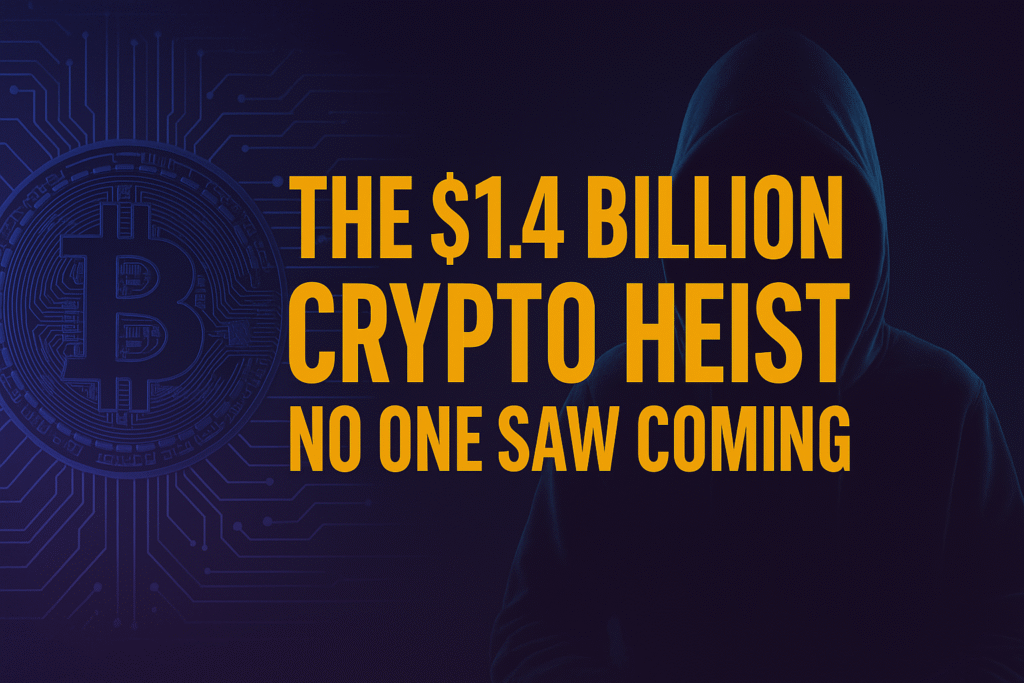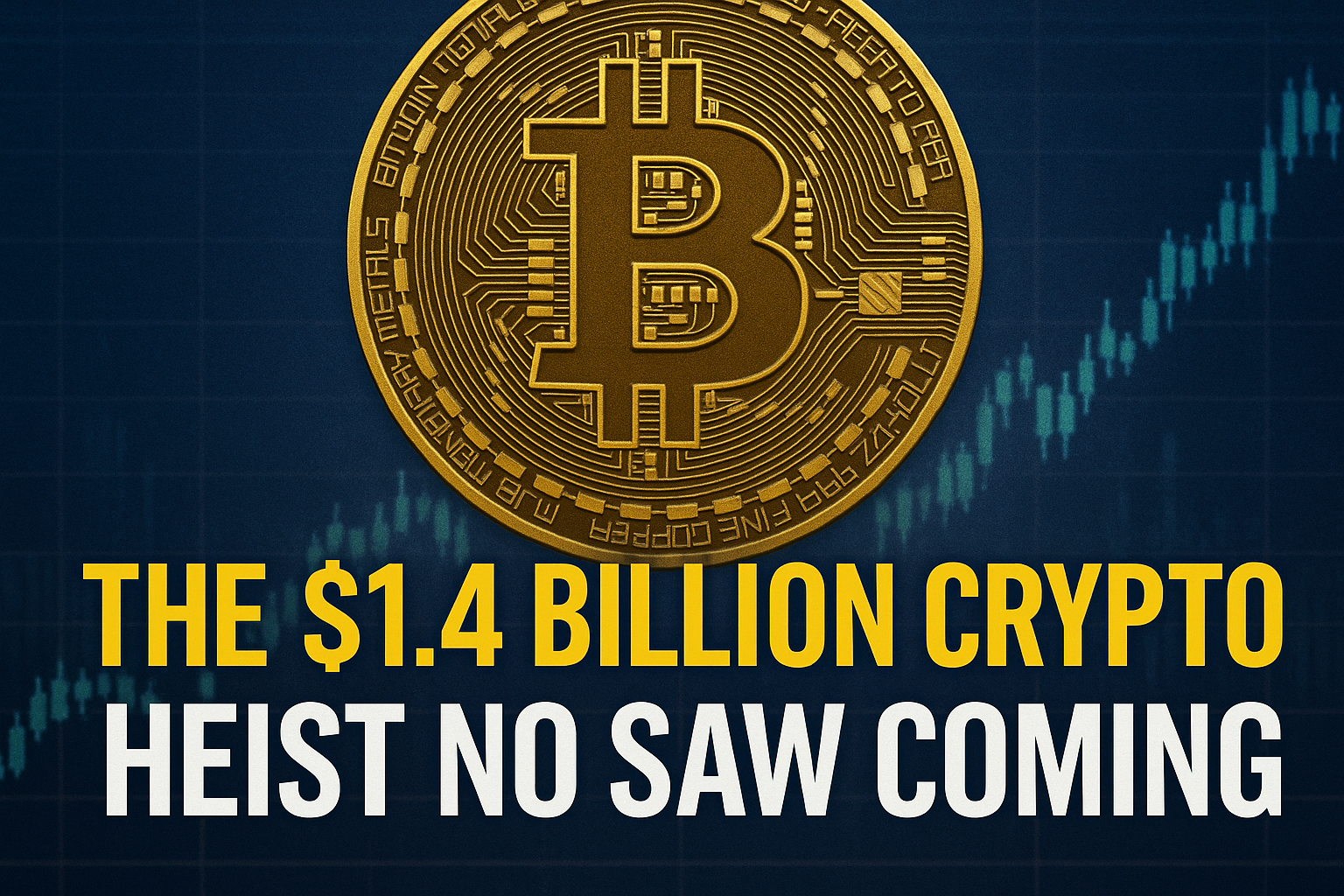The $1.4 Billion Crypto Heist No One Saw Coming Which Shook 2025
In 2025, in February, a cyberattack hit the cryptocurrency exchange Bybit that had unprecedented characteristics. As part of the investigations, the Lazarus Group of hackers used flaws in a Safe{Wallet} third-party software and stole 400,000 Ethereum tokens worth approximately $1.4 billion. It immediately became the biggest crypto exchange hack in history that broke all previous records and altered the concept of financial betrayal in the digital world.
What is more surprising, in the course of 72 hours, Bybit openly stated that it has recovered the reserves by raising 447,000 ETH through emergency funding, which is both bold and extraordinary. The alarming incident created a stir in the global community, as even the best digital financing systems could not be deemed unreachable.
The Money Vanishes Overnight
Bybit assured its users that they were safe, but other victims have been reported in the months that followed. India Loads In India, exchange CoinDCX lost approximately $44 million in USDT when a Bengaluru-based developer was used by hackers to gain access to its systems after malware was installed on his work laptop. Authorities believe there is a linkage to North Korean threat actors after it was reported that there had been mysterious foreign contacts and unusual financial transactions. This hack turned into the biggest crypto heist in India and highlighted the issue of exchange security controls and freelance outsourcing.
Hacks Surge as Crypto Market Booms
By the middle of 2025, the theft of cryptocurrencies grew. According to analysts of Chainalysis, in the first six months of this year, more than $2.17 billion has been stolen, which is already more than in 2024. The thieves employed more advanced strategies, utilizing cross-chain bridges, malware campaigns, and insiders as opposed to the traditional mixers. July alone had 17 large hacks with losses totaling 142 million, this is 27 percent more than in June. CoinDCX, GMX, and BigONE were on the top of the targets, which is a sign of the global nature of the vulnerability that ties even the most sophisticated exchanges.

When Cryptocurrency Meets Geopolitics
One of the most scandalous cases was connected with the Iranian crypto exchange Nobitex. Hackers that claimed to be Predatory Sparrow, who is thought to have Israeli connections, stole more than 90 million digital assets and deposited them into unreachable wallets as a political statement. The attackers alleged that Nobitex was being used to avoid sanctions against Iranian Islamic Revolutionary Guard Corps. Researchers at Elliptic and TRM Labs confirmed this statement and added that cybercrime has now taken an intersection with geopolitics. The money had also been literally burnt and this was a symbolic and costly move. There was no ransom, no reuse and it was only destruction
Inside the Shadow Network of Cybercriminals
The hackers behind the Bybit incident, Lazarus, had already attacked Indian exchange WazirX in 2024 stealing almost $235 million. They did this by undermining multi signature wallet protocols and manipulating smart contracts. In May 2025, law enforcement hacked LockBit ransomware infrastructures, which were also associated with Lazarus, revealing 60,000 Bitcoin addresses and disclosing dark chat logs.
These revelations showed exactly how intertwined ransomware gangs, nation-state hackers and cryptocurrency heist crews have become. Since intelligence services publish more of their internal operations, the virtual impenetrability of the digital money tracking across borders is revealed and criminals act in the open yet through obscure systems.
Why the World Is Watching This Case?
This direction was drawing the attention of the world not because geeks of technology are most interested in crypto markets but because the money is not the only matter at stake. In months, billions in value were lost. The giants of tech did not pass protection on scale. Some of the funds have been recovered by the law enforcement, such as when the FBI confiscated more than $2.4 million in Bitcoin belonging to a member of a known ransomware group. Nevertheless, billions are still lost and will probably never be recovered. It is a nightmare to the users: cryptocurrency wallets and exchange accounts are not merely tools, but rather safes that can be silently broken into at any moment.
What This Means for Everyday Users?
Recent security researchers emphasize user protections instead: multi-factor authentication, frequent audits of exchange code, reduced usage of third-party development tools, and avoiding downloading through ad networks of untrusted origin. The recent disclosure of a malware known as JSCEAL spread through 35,000 deceptive advertisements of crypto exchanges all over the world, referred to advertisers and trust networks of websites. The malware gets the private keys through malicious JavaScript installed through MSI installers. Millions of people are exposed to it, and not many antivirus tools can identify the threat. Each email click or an advertisement banner has become risky.
Concluding Reflection
The Bybit mega-heist, CoinDCX hack in India and the Nobitex cyberattack in Iran, are the harbingers of the crypto heist epidemic that has hit in 2025 and reveals a terrifying fact. Digital finance was expanding at such a pace that the security was not keeping up, and the legal framework and worldwide supervision had yet to keep up. By being creative, fast, and having geopolitical leverage, the hackers transferred billions in value without being noticed, in days or even months. And although some money has been retrieved, much of it is still trapped in wallets that belong to anonymous participants.
To the investors, exchanges, and regulators, the lesson is evident. The faith in technology should also be accompanied by the caution and prescience. Until systems can be better, until networks of crime are thoroughly unraveled, this is a terrible tale of how easy it is to disappear in the digital age, and how challenging it can be to restore the money to the land of the living.
Share this content:




Post Comment